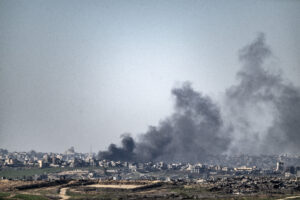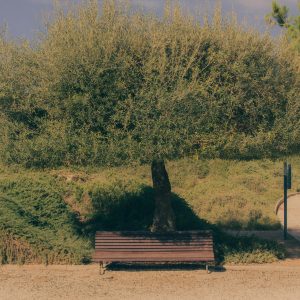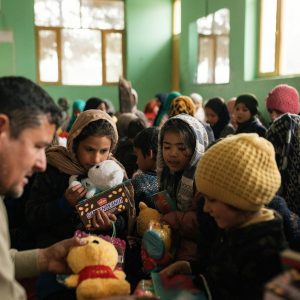Palestinian artist Qatanani showcases metal embroidery sculptures amid Gaza conflict
A perfect blend of arts, history, politics and resistance, in Qatanani’s works, showcasing Palestinian suffering and the life in the midst of this suffering
BEIRUT, Lebanon (MNTV) – More than a year before the Zionist occupation launched its genocide in Gaza, Palestinian artist Abdul Rahman Qatanani began crafting a series of large-scale sculptures inspired by traditional Palestinian embroidery.
However, instead of using conventional materials like thread and fabric, Qatanani reimagined these patterns in solid industrial materials, creating powerful visual statements on resilience and heritage, featured in Lebanese Arabic daily, Al Akhbar.
Saleh Barakat Gallery recently unveiled “Doors of the Story,” an exhibition featuring nine of Qatanani’s sculptural works.
Initially conceived as an introspective project, the series evolved in response to the escalating violence in Gaza, gradually mirroring the broader political and humanitarian crisis.
The exhibition runs until February 15, transforming delicate Palestinian embroidery into formidable metal structures fashioned from oil barrels, barbed wire, and industrial grinding machines—materials often associated with destruction and conflict.
Qatanani’s approach provides multiple interpretations, blending tradition with innovation, and past with present.
Palestinian embroidery, recognized by UNESCO as an intangible cultural heritage in 2021, is given new life and solidity through metalwork, underscoring the enduring strength of Palestinian identity.
The perforations in the metal plates evoke the imagery of bullet holes, reinforcing themes of struggle and survival.
One of the exhibition’s most striking pieces, “Bottom of a Coffee Cup,” features intricate Palestinian motifs crafted from silver barbed wire.
Despite the rigid material, Qatanani skillfully manipulates it to replicate the meticulous stitches of traditional embroidery.
Other notable works include “Gaza,” a silver and copper wire installation, and “Palm Tree,” a multicolored sculpture composed of red, blue, green, and yellow wire.
Six additional sculptures, crafted from solid metal sheets, incorporate various color schemes—some resembling national flags, including those of France, Germany, and Italy.
This choice of colors raises questions about the possible political messages embedded in Qatanani’s work, though no explicit explanation is provided in exhibition materials.
The exhibition is complemented by a display of traditional Palestinian textiles from the Dalloul Art Foundation, reinforcing the connection between Qatanani’s contemporary interpretations and historical craftsmanship.
His decision to suspend the metal works from the ceiling rather than affixing them to walls adds a sense of movement, as if these rigid structures, like Palestinian identity, refuse to be confined or erased.
Qatanani’s metal embroidery sculptures challenge perceptions of tradition and materiality.
His work stands as both an artistic and political statement, proving that even under siege, Palestinian culture endures and evolves.
The exhibition started on 10th January in Beirut, and will continue to 15th February.










